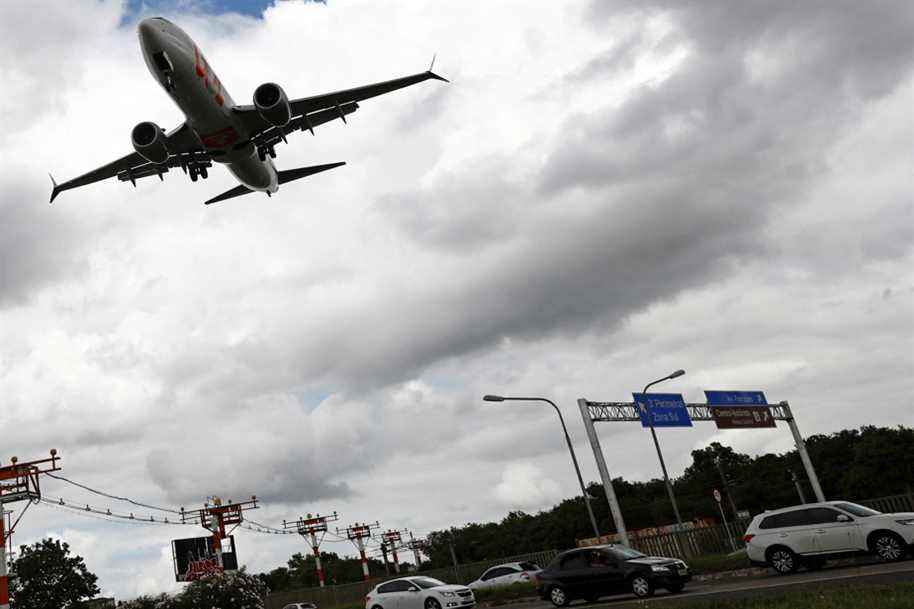On October 29, 2018 and March 10, 2019, two Boeing 737 MAX aircraft from Lion Air and Ethiopian Airlines crashed, killing 346 people. In Downfall: The Case Against Boeing, documentary devoted to this affair and presented at Sundance, the purchase of McDonnell Douglas by Boeing and the immoderate pursuit of profits are called into question.
Posted at 12:00 p.m.
Although Boeing’s purchase of aircraft manufacturer McDonnell Douglas dates back to 1997, it initiated a dramatic cultural shift within the Seattle giant where the relentless pursuit of profits and increased share value took hold. the step on passenger safety.
This is the scathing conclusion that emerges from the documentary Downfall: The Case Against Boeing, dedicated to the two crashes of 737 MAX aircraft in less than five months and presented last Friday at the Sundance Festival. Directed by Rory Kennedy, the youngest of Robert F. and Ethel Kennedy’s 11 children, the film will soon be released on Netflix.
The first half of the documentary exposes the facts surrounding the two accidents and explains the main technical failure involved, namely a malfunction of the MCAS anti-stall system. This system is intended to stabilize the new aircraft whose cabin could be unbalanced by the weight of heavier engines than the previous ones on the 737.

PHOTO FROM WIKIPEDIA
Director Rory Kennedy
Then, in the second part, the accusations rain down. They come as much from a few relatives of the victims as from journalists, former engineers and quality managers at Boeing as from Peter A. De Fazio, Democratic Representative of Oregon in the United States Congress and Chairman of the Transport Committee which held an inquiry into the causes of the two disasters.
For former employees interviewed, things started to change when Boeing bought McDonnell Douglas at the very end of 1996. Suddenly, the whole corporate culture changed. Exit the family spirit and the concern for quality, and hello profits.
“It’s as if, suddenly, we had started making washing machines,” said one of the participants.
“I was responsible for quality at Boeing,” said another former employee. If something went wrong, you had to find the source of the problem to keep the device safe. But thereafter, everything was going according to speed, to go ahead and complete the job. We couldn’t stop or slow down anymore. »
The film indicates that the design of the 737 MAX was made in the wake of the arrival of a major competitor: the Airbus A320 Neo which consumes less fuel. To respond to this, the American aircraft manufacturer put heavier and more efficient engines on its 737. The new aircraft caused a sensation, and sales exploded.
Former journalist at wall street journal and one of the most cited witnesses in the movie starring Peter A. De Fazio, Andy Pasztor investigated both crashes. According to him, Boeing did everything to blame the pilots and made a minimum of gestures to correct the situation after the first crash.

PHOTO PROVIDED BY THE PRODUCTION
A scene from the documentary Downfall: The Case Against Boeing
Subsequently, hundreds of thousands of pages of aircraft manufacturer documents submitted to the Congressional Transportation Committee showed that the manufacturer had no intention of training pilots in simulators, which is very expensive, to familiarize themselves with the MCAS system. Level B training (with computer or other visual tools) was sufficient.
Boeing responded in writing to requests for interviews, alleging, among other things, that one of the witnesses (John Barnett) is making false allegations and that no government or Federal Aviation Administration investigation has shown that the working conditions in the production line led to both crashes. The company nevertheless paid out $2.5 billion in fines and compensation to avoid criminal prosecution.
Very interesting in its story, the film nevertheless appeared to us agreed, tearful and supported. The director uses simulations several times.
On review aggregator Rotten Tomatoes, three out of four reviews were positive as of January 23. The Hollywood Reporter is otherwise scathing, finding the research superficial, the sources insufficient, and the conclusion simplistic.

